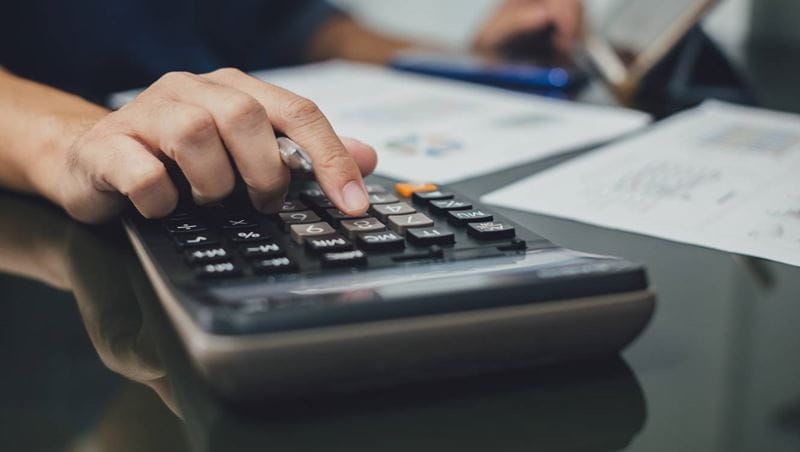
Have you ever wondered what will happen to your pension when you die? Will it help to provide for your loved ones? Below, we explain what you can expect, including whether tax is payable on death benefits from pensions.
This article covers defined benefit pensions, either ‘final salary’ or ‘career average’. If you have a public sector pension, it’s almost certainly a defined benefit (DB) plan. Some private sector pensions are also defined benefit, especially if you joined a long time ago.
If you have a defined contribution pension, read what happens to a defined contribution pension when you die, or if you're not sure, read this guide to defined benefit vs defined contribution.
If you die while you’re still working for the employer that runs the defined benefit scheme, a lump sum ‘death in service’ benefit is usually paid out to the person of your choice. This is often a multiple of your salary, such as two or four times your salary. It’s almost always tax-free (the exceptions are if you’re over 75 or the payout isn’t made for more than two years after the death).
It’s possible that this tax-free status could change in future (more on this below). In addition, an income will normally be paid to your spouse or civil partner, which is a percentage of the pension you would have received, such as 50%.
According to Andrew Tully, technical services director at the financial company Nucleus, some DB schemes will also offer pensions to children below the age of 18 or 23 (if they’re in full-time education), in addition to any income to the partner. If you don’t work for that employer any more, but are yet to draw a pension from the DB scheme, you’re known as a ‘deferred member’.
Beneficiaries of a deferred member don’t usually receive a lump sum, but an income to your partner, perhaps 50% of the benefits you would have got, is usually paid out. Plus, in some cases, pensions for children. Pension income is taxed at the beneficiary’s highest income tax rate.
Roger Clarke, partner at financial planner firm The Private Office, comments: “All pensions from DB schemes (whether to the member or payable to the spouse or civil partner on death) are taxed at marginal rate.”
If you have started drawing an income from your pension before you die, a percentage of the income you are receiving, such as 50%, will usually be paid to your spouse or civil partner.
Tully points out: “If you die in the first few years [of retirement] then what is known as a ‘guarantee’ may be paid where the full value of the income you were receiving continues to be paid for the remainder of that period. For example, you die after two years, 100% of your income is paid for the next three years, then it falls to, say, 50%.”
Or this might be paid as a ‘pension protection lump sum’.
If it's paid as income, this is taxable at the recipient’s highest income tax rate. Any lump sum won’t attract income tax if you die below 75. But it counts as part of your estate so it may be liable for inheritance tax.
Clarke adds that some schemes can pay a pension income to children – rather than a spouse or civil partner – “but all schemes vary so it’s important to look at each scheme separately”.

You may have seen the headlines about pensions becoming liable for inheritance tax from April 2027. So, does this mean DB pensions that loved ones inherit could also be stung by IHT?
Generally, no. It’s been confirmed that death-in-service lump sums will be exempt from inheritance tax.
A dependant’s pension is likely to also be exempt. Tully says: “The current suggestion is any dependants’ pension payable from a DB scheme is not in scope. So, for example the 50% income paid to your partner from a DB scheme won’t be included in your estate.”
The main IHT risk is if your dependants are paid a pension protection lump sum, if you die within a few years of starting to take your pension, as this would be considered part of your estate.
But inheritance tax would only be due if the total value of the estate was over the IHT threshold.
An income from a DB pension after the pension scheme member dies can generally only be paid to a spouse, civil partner or someone who is financially dependent (or interdependent). Tully notes: “The final category will include a ‘cohabitee’, a partner you live with but aren’t married to where there are shared financial responsibilities, such as mortgage or rent.”
This is based on the pension tax rules in the 2004 Finance Act. A scheme can set its own criteria for interdependency (also known as mutual dependence). It will often insist that unmarried couples need to have lived together for two years or more to receive a pension.
The surviving person may need to provide evidence of a long-term relationship with shared finances, such as mortgage statements or joint bank account statements. A death in service lump sum, on the other hand, can be given to an unmarried partner (or anyone else) without restrictions, as long as you nominate them.
If there is no surviving spouse, civil partner or dependants, most schemes won’t pay a pension income to anyone else. So when you die, your pension will die with you. A child over the age of 23 isn’t normally classed as a dependant, but there are exceptions, the main one being where the adult child is dependent because of physical or mental impairment.
Tully adds that children’s pensions normally stop by age 23 at the latest, sometimes earlier.
The exemption is if the child has a mental or physical impairment that means they are still financially dependent. As we’ve seen, there are completely different rules for the death-in-service lump sums if you die while you’re still working for your employer. These can be given to whoever you want. It could be an adult child, long-term partner, a niece or nephew or even a friend.
You can split it between more than one person. To do this, you’ll need to fill in a nomination form.
The nomination form, often called ‘expression of wish’, sets out who you would like to inherit your pension. “Lump sums can be paid to nominated beneficiaries who are not necessarily spouses or dependants – so if you don’t keep the form up-to-date, this money could go to someone who you prefer it didn’t!” says Clarke.
The form is not binding on the pension scheme but in general the trustees will pay benefits to the person or people you nominate. Ian Cook, financial planner at the wealth manager Quilter Cheviot, adds: “Ensuring the correct person or people are nominated can prevent the trustees considering someone who you no longer want to receive the money, such as a former partner.
“Regularly checking your beneficiaries can provide peace of mind that the right people will receive your pension.” Make sure you keep your nomination up-to-date, particularly after big life events such as marriage, divorce, loss of a partner or the birth of a child or grandchild. If you want to fill in – or update – the form, have a look for it on the pension scheme’s website. If you can’t find it, get in touch with them.
There will be specific rules that apply to your pension scheme. These vary a lot, so it’s worth checking with your provider to determine what will apply. The death benefits are normally set out in a scheme booklet. You can ask your pension scheme for a copy, or your HR team if you still work for the company.


Teachers can now get a Blue Light Card. Is the fee worth it? Discover the savings and top alternatives.

How to bring peace of mind to your impending nuptials.

Explore whether marrying a friend or a civil partnership could be a good strategy to reduce IHT.